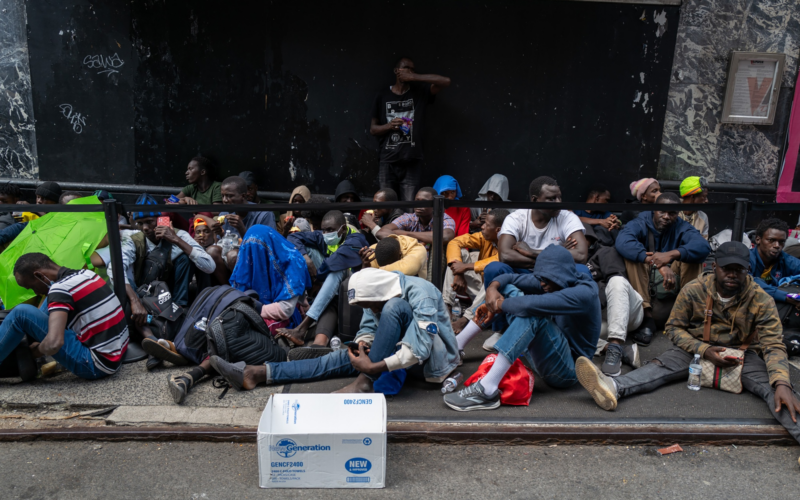As New York City struggles to house nearly 65,000 asylum seekers from the southern border, a new crisis is unfolding—one that highlights the city’s failure to manage the migrant influx and the deepening consequences of its policies. Across the city, a growing number of migrants are resorting to sleeping in makeshift encampments, reflecting the grim reality that the city’s shelter system is overwhelmed and ineffective.
Each night, a tent city emerges on Randall’s Island, where one of the city’s largest migrant shelters is located. Migrants cook over small fires, shower with buckets, and sleep under the stars, just miles away from the iconic Manhattan skyline. Ten miles south, others huddle beneath a highway overpass in Brooklyn or spread out cardboard bedsheets in playgrounds, illustrating the stark choices many face: endure squalid, unsafe shelter conditions or brave the elements on the streets.
These encampments are not just a humanitarian concern; they are a direct consequence of Mayor Eric Adams’ mismanagement and the broader Democratic policies that have turned New York City into a magnet for migrants. The influx of over 200,000 displaced individuals since early 2022 has strained the city’s resources, burdened taxpayers, and sparked quality-of-life concerns among residents.
The city’s recent attempts to limit the time migrants can stay in shelters have failed to address the root problem, instead pushing more individuals into street homelessness. Some migrants, citing safety concerns, unsanitary conditions, and remote shelter locations, have chosen to sleep outside. Others have been evicted due to stricter time limits, only to join the ranks of the city’s growing homeless population.
New York’s “right to shelter” policy, which guarantees a bed to anyone who is homeless, has been stretched to its limits. Despite the city’s efforts to impose new restrictions, many migrants remain in the system, legally entitled to stay as their asylum cases languish in the courts for years. This has led to a troubling situation where the city is both unable to deny shelter and incapable of adequately providing it.
The implications of this crisis extend beyond New York City. The failure to manage the migrant influx effectively is fueling Republican criticism and could have significant political ramifications ahead of the presidential election. The situation is also exacerbating anti-immigrant sentiment in a city where residents are increasingly frustrated by the strain on public services and the visible deterioration of public spaces.
While the Biden administration’s recent border crackdown has reduced the number of new arrivals, the persistent presence of migrants on the streets highlights the inadequacy of current policies. The shelter on Randall’s Island, for instance, has become a flashpoint for violence and unrest, with fights, thefts, and even murders becoming all too common. The shelter’s impact on the community has sparked legal threats from local organizations, further complicating the city’s response.
For many New Yorkers, the encampments and deteriorating conditions represent a gross misuse of taxpayer dollars. Residents like Barry Bliss, a Bronx security guard, express frustration that their hard-earned money is funding a system that is clearly failing. The closure of local amenities, such as libraries, only adds to the sense of betrayal felt by many.
The rise of homeless encampments among migrants is a stark reminder that New York City’s current approach is unsustainable. It’s time for leaders to acknowledge the failures of these policies and adopt a more pragmatic, Republican-led approach that prioritizes the needs of American citizens, enforces immigration laws, and ensures that public resources are used responsibly. The city’s future depends on it.








